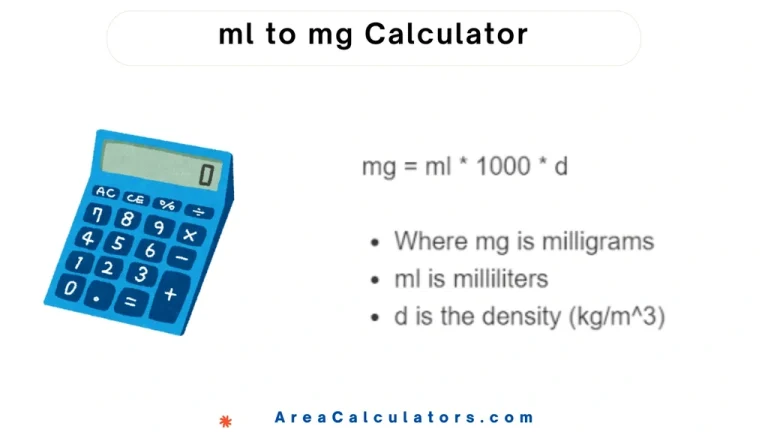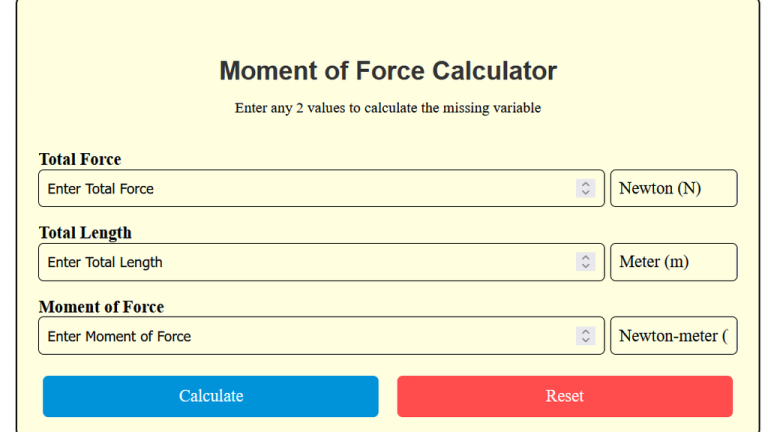Rain to Snow Calculator [Rain, Snow, Weather Calculator]
To determine the snow equivalent of rainfall, multiply the rain amount by the factor of (5+T/16), where T is the temperature in degrees Fahrenheit.
To determine the snow equivalent of rainfall, multiply the rain amount by the factor of (5+T/16), where T is the temperature in degrees Fahrenheit.
The Rain to Snow Calculator can instantly estimate how much snow a specific amount of rainfall will produce, based on temperature. This calculation is predominantly useful for predicting snowfall amounts from rain in colder regions. Snow-to-rain ratios vary depending on temperature, as colder air leads to lighter, fluffier snow.
S = R ∗ (5 + T / 16)
| Variable | Description |
|---|---|
| S | Snowfall (in inches) |
| R | Rainfall (in inches) |
| T | Temperature (in Fahrenheit) |
Example 1:
| Step | Calculation |
|---|---|
| Rainfall (R) | 2 inches |
| Temperature (T) | 32°F |
| Snowfall Calculation | |
| Result | inches |
Answer: When the rainfall is 2 inches at 32°F, the snowfall equivalent is 14 inches.
Example 2:
| Step | Calculation |
|---|---|
| Rainfall (R) | 4 inches |
| Temperature (T) | 20°F |
| Snowfall Calculation | |
| Result | inches |
Answer: When the rainfall is 4 inches at 20°F, the snowfall equivalent is 25 inches.
The Rain to Snow Calculator is a fascinating tool. You can use it for estimating how much snow would accumulate from a given amount of rain, based on typical rain-to-snow conversion ratios. Generally, one inch of rain translates to about 10 inches of snow, depending on factors like temperature and moisture content in the air.
This ratio can vary, with heavier, wetter snow requiring a lower ratio (about 5:1) and light, fluffy snow needing a higher ratio (up to 15:1 or more).
Using this calculator is simple: just input the amount of rainfall in inches, and it will convert that to an approximate snow accumulation, giving a clearer idea of potential snowfall from rainfall measurements.
Without mincing matters, the Rain to Snow Calculator is a reliable way to gauge snowfall from rain, aiding in preparations for winter weather by translating rain forecasts into snow estimates based on standard ratios.

To convert milliliters (ml) to milligrams (mg), multiply the volume in ml by 1000 and then by the substance’s density (d) in g/ml. This gives the mass of the substance in milligrams. ml to mg Calculator Enter any 2 values to calculate the missing variable Volume ml L m³ in³ Density (1g/cm3 for Water) kg/m³…
To calculate 75% off, multiply the original price (P) by 0.75 to find the discount amount, then subtract this value from the original price to get the final amount (A). The 75 Percent Off Calculator is empowered to quickly find the discounted price after applying a 75% reduction. Whether you’re shopping for sales or managing…
To calculate the tile area, multiply the tile length by its width. This will give you the area of a single tile. The Tile Area Calculator helps you determine the area a single tile covers and how many tiles are required to cover a specific space. It’s useful for planning tiling projects for floors, walls,…

To calculate the moment of force, multiply the applied force by the perpendicular distance from the pivot point. The Moment of Force Calculator serves to calculate the rotational effect of a force applied at a distance from a pivot or axis. Moments are critical in physics, engineering, and structural analysis, such as beam deflection and…
To calculate the perimeter of a semicircle, add the half-circumference (π×r\pi \times r) to twice the radius (2×r2 \times r). The Semicircle Perimeter Calculator is an essential tool for determining the boundary length of a semicircular shape. This calculator is particularly useful in geometry, design, and construction, helping you measure the total perimeter by considering…

Determine the point at which private mortgage insurance (PMI) can be removed by calculating if your loan balance is 80% or less of your home’s current value. The Remove PMI Calculator is a practical tool for the homeowners who are looking to eliminate private mortgage insurance (PMI) payments. PMI is typically required when a buyer’s…